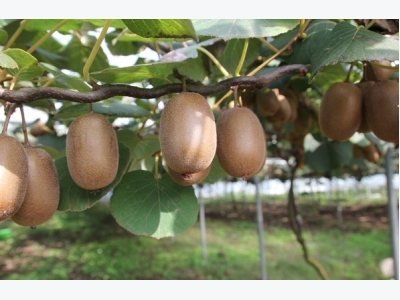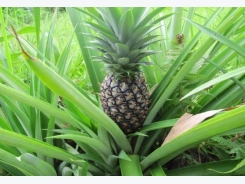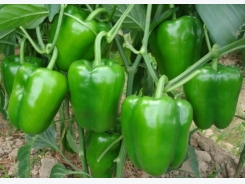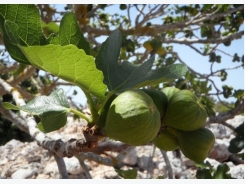Kiwi Cultivation Information Guide

Introduction of Kiwi Cultivation:- Kiwi is a deciduous vine which is also called as “Chinese gooseberry”. Kiwi fruit is native to China and now spread across New Zealand, Italy, United States, Japan, Australia, France, Chile and Spain. This fruit resembles the bird “Kiwi” in New Zealand. In India, this fruit is becoming more popular day by day and commercial farming of kiwi has been extended to the mid-hills of Himachal Pradesh, Uttar Pradesh, Jammu and Kashmir, Sikkim, Meghalaya, Arunachal Pradesh, Nilgiri hills and hills of Tripura. Kiwi fruits may be consumed fresh or combined with other fruits in salads and deserts. These fruits are also being used in preparation of squash and wine. When it comes to economic importance, commercial production of Kiwi is increasing rapidly as these fruits are highly acclaimed for its nutritive and medicinal value. These fruits have excellent demand in export market as well and one can get decent profits in kiwi fruit cultivation.
Scientific Name or Botanical Name of Kiwi:- Actinidia deliciosa.
Genus of Kiwi:- Actinidia.
Family Name of Kiwi:- Actinidiaceae.
Top 10 Countries of Kiwi Production:- The following are top 10 production countries of Kiwi fruits.
- China
- Italy
- New Zealand
- Chile
- Greece
- France
- Turkey
- Iran
- Japan
- United States of America.
Health Benefits of Kiwi:- The following are some of the health benefits of Kiwi fruits.

Health Benefits of Kiwi fruit
- Kiwis are good source of vitamin ‘B’ and ‘C’ and floate and minerals (phosphorus, potassium & calcium).
- Kiwi fruits are good for better sleep.
- Kiwi fruits help in lowering blood pressure.
- Kiwi fruits help in digestion and prevent from constipation.
- Kiwis are good for skin health.
- The fiber and potassium in Kiwi fruit support heart health
Cultivars (Varieties) of Kiwi:- Well, there are many cultivars (varieties) of kiwi fruits grown across the world. Some of the popular varieties include; fuzzy kiwifruit, golden kiwifruit, Chinese egg gooseberry, Baby kiwifruit, Arctic kiwifruit, red kiwifruit, silver vine, and purple kiwifruit. Some of other varieties cultivated in Indian continent are; Abbott, Bruno, Hayward, Allison, Monty & Tomuri.
Climate Requirement for Kiwi Cultivation:- The kiwi plants thrive best in warm and humid agro-climatic conditions. They grow very well between 800 to1500 meters above m.s.l (mean sea level). A welldistributed annual rainfall of 150-200 cm during growing period is more than enough for plant growth and proper fruit-set. The strong winds and frost during growing periods/flowering stage are injurious to the plants. As kiwi can be damaged by sun burn, the ideal temperature should be below 35°C. Soil Requirement for Kiwi Cultivation:- Deep friable sandy loam soils rich in organic matter with welldraining capacity are suitable for kiwi cultivation. A soil pH range 6.5 -7.0 would be ideal for optimum fruit yield.
Propagation in Kiwi Cultivation:- Kiwi orchard is propagated mostly through vegetative method by using cuttings and grafting.
Land Preparation, Planting, and Pollination in Kiwi Cultivation:- Steep land is contoured into terraces for planting kiwi vines. The rows should be oriented in an N-S (North-South) direction for maximum sunlight exposure. Prepare the soil deep enough and fine tilth by giving 3 to 4 ploughings followed by 1 or 2 harrowing. Make sure the soil is free from all kinds of weed which is very important for successful establishment of plants. Preparation of pits, mixture of farmyard manure and filling of pits are to be completed as per requirement in time.
The planting should be done at the same depth at which the plants were grown in the nursery beds. Make sure to press the soil properly around the plant roots for proper establishment. Irrigation should be provided after planting/transplanting in the field. Generally, in any orchard, spacing of plants depends on cultivar (variety) and training system. However, in Kiwi orchard, T-Bar and pergola training systems (Training is to support the vine on a structure for proper establishment) are being adopted. T-Bar Training system: A spacing of 4 meter from row to row and 5-6 meter from plant to plant should be maintained.
Pergola Training System: A spacing of 6 m. from row to row. Planting of Kiwi should be done in late winter or early spring. When it comes to pollination, male and female flowers are borne on different plants. One male plant should be planted for every 9 female plants for successful pollination. Insect pollination should be carried out for the production of marketable fruits.
Training in Kiwi Cultivation:- The pillars should be made of wood, concrete or iron and are erected at a distance of 6 meter from each other in a row. A single wire fence is commonly adopted though another wire is sometimes provided and then structure takes the form of kniffin system. One 2.0-3.0 mm. thick tensile wire should be strung on the top of pillars which are 1.8 m-2.0 m. high above the ground level. A cross arm of 1.5 meter on the pole also carries two outrigger wires. This training is called as T-bar or overhead trellis/telephone system. The laterals arising from the main branch should be trained on canopy of three wires.
Irrigation in Kiwi Cultivation:- Any orchard or crop requires good irrigation for better establishment and fruit set. In Kiwi cultivation, it is important to provide frequent irrigation during 2-3 years of planting. Once the vine meet the requirement, foliage can cover the entire soil surface and this is acted as good mulch. As we all know mulch reduces the irrigation requirement by saving from water evaporation and also control the weeds at plant/tree base. However, Kiwi orchard requires frequent irrigation especially during drought or summer season. Generally, irrigation at 10-12 days interval has been found to be beneficial.
Manures and Fertilizers in Kiwi Cultivation:- In orchard, proper application of fertilizers and manures are important for plant health and proper fruit-set. A 25 kg of well-decomposed farm yard manure (FMY) should be applied as basal dose. Application of NPK mixture of 0.5 kg containing 15% nitrogen is preferred each year. After 5 years of plants age, an N:P:K of 900:600:900 grams/tree should be applied each year. Usually, the nitrogen (‘N’) should be applied in 2 equal doses, half 3 to 4 months before fruit set and half of it after fruit set.
Intercultural Operations in Kiwi Cultivation:-
Weed Control: Weed control in any crop is essential task to be performed for good yield of produce. In Kiwi orchard, carry out weed control operation on regular basis to remove the weeds. Mulching can be provided for controlling weeds or any recommended chemical weedicides can be applied.
Pruning: The kiwi plants should be pruned hard to about 30 cm to encourage vigorous growth.
Inter-cropping in Kiwi Cultivation:- Farmers can get some extra income for going to inter-cropping during initial 4 to 5 years of period ( until tress start bearing fruits). In Kiwi orchard, vegetables and leguminous crops can be grown during the initial 4 -5 years of plantation.
Pests and Diseases in Kiwi Cultivation:- Leaf-roller caterpillars, Armored scales, box elder bug, and root knot nematode are some of the insect-pests found in Kiwi cultivation. To control these pests, contact any horticulture department. Armillaria root rot, Bacterial blight, Bleeding canker, Crown gall, Phytophthora root and crown rot are common diseases found in Kiwi cultivation. For symptoms and their control measures, contact your local horticulture department.
Note: Your local Horticulture is a good source for finding suitable solutions for controlling pests and diseases in Kiwi Cultivation.
Harvesting in Kiwi Cultivation:- Usually, Kiwi vine starts bearing fruits at the age of 4-5 years. However, commercial production starts at the age of 7-8 years. Expect the fruits to mature earlier at lower altitudes and later at high altitudes, due to temperature variations. Prefer to harvest large size fruits and leave smaller one to increase the fruit size. After harvesting, rub the fruits with coarse cloth to remove any stiff hairs on the surface of Kiwi fruits.
Yield in Kiwi Cultivation:- Any orchard yield depends on many factors like tree age, variety (cultivar), irrigation, soil, climate and other orchard management practices. On an average one can obtain yield of 50-100 kg /vine. Vines on trellis produce about 25 tonnes/ha, after 7 years.
Post-Harvest Management in Kiwi Cultivation:-
Grading and Packing of Kiwis: Kiwi fruits should be graded based on weight. Usually, the fruits weighing 70 grams and above are considered as s ‘A’ grade fruits and between 40-70 grams of fruits are considered as ‘B’ grade fruits. Cardboard boxes can be used for packing.
Storage and Marketing of Kiwi Fruits: Hard fruit of Kiwi can be transported to long distances without using sophisticated packing. These fruits can be stored for one month at room temperature and for 3-4 months in cold storage at 0°C. Otherwise, you can contact any fruit supply whole sale dealers for bulk purchase at farm gate.
Có thể bạn quan tâm
Phần mềm

Phối trộn thức ăn chăn nuôi

Pha dung dịch thủy canh

Định mức cho tôm ăn

Phối trộn phân bón NPK

Xác định tỷ lệ tôm sống

Chuyển đổi đơn vị phân bón

Xác định công suất sục khí

Chuyển đổi đơn vị tôm

Tính diện tích nhà kính

Tính thể tích ao hồ



 Lychee Fruit Cultivation Information Guide
Lychee Fruit Cultivation Information Guide  Fig Cultivation Information Guide
Fig Cultivation Information Guide